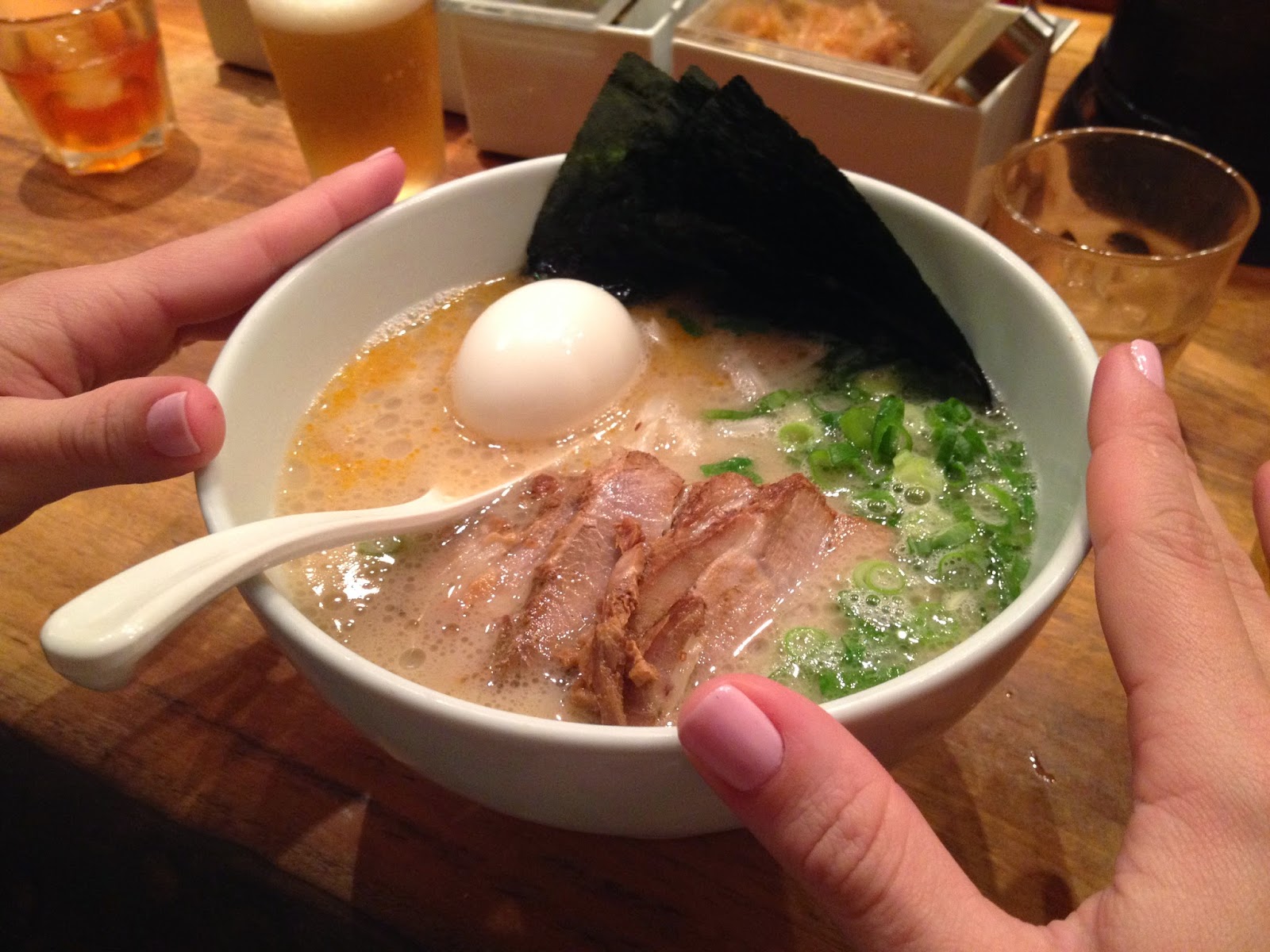A trip to the
Tsukiji fish Market is on every list of
top sights in Tokyo. This place is the
real thing, not remotely dumbed down, little trucks and carts whizzing
everywhere, fisherman shouting and bartering, complete with several hundred
pound tunas, live eels squiggling in vats of salt water, and every color and
shape of seafood you can imagine. The
market is divided into two parts - the inner market for wholesalers, where
store owners and chefs come to shop and haggle; and the outer market, lined
with little stalls and restaurants where normal people come to buy their fish
for the day and fisherman get their breakfast after an early morning on the
water.
Approaching from the
outside, it just looks like a bustling
warehouse . Step inside though and you are in the midst of the world's largest
fish and seafood market. Walking through the endless aisles of the inner market,
it's hard to believe there is anything left in the ocean after the catch. There
is every species and size of shellfish, mollusk, octopus, squid, fish and
caviar here. Things that are instantly recognizable and others that you never
knew existed.
The building feels
ancient, like a relic from the past that resists all notions of modernization.
You are constantly dodging carts and forklifts, shimmying down tiny aisles,
stepping over puddles and trying not to get in the way. It is frenetic and
exciting. A symphony of moving parts, sights, sounds and action.
Every stall
specializes in one thing or the other. Great uni over here, the best crabs over
there, gorgeous roe around the corner.
Tokyo Chefs have their favorite spots, but as a tourist it's fun just to
walk the aisles and take it all in. Like
most of Tokyo, it is an assault on the senses. The action starts early, around
5am for the famous tuna auction with brokers bidding top dollar for the good
stuff. The inner market starts breaking
down around 10am, with the outer market following suit a few hours later.
Bicycles are common
here, and a reasonably easy way to get around the market if you know where you
are going. Large tour groups are banned from the market, so you never get that
feeling of following the tourist hoards to the guidebook highlights. Small, private
groups are allowed though, which is what we did. This was our only organized
tour in Tokyo and it was the perfect place for it. Having a guide let us know
what we were looking at, she found us a great sushi spot for lunch, and helped
navigate the labyrinth that is the Tsukiji
fish Market.
Some beautiful roe
on display. The market in it's current
form has been there since 1935. They are building a shiny new building,
scheduled to be opened next year, that will move the inner market and it's tuna
auctions a few miles away. The outer market will remain where it is. This is
somewhat controversial and kind of a bummer to the foodie tourists coming to
see this place in action.
Seafood in every
color, shape and size.
Mmmm...dungeness
crab, dusted in panko breading.
Sashimi grade tuna,
ready for sale, and snacks.
Some pretty sea
snails.
No idea what kind of
fish these are, but they look like they would make great darts.
Fresh octopus
tentacles, ready for a sashimi plate.
I've never even seen
shrimp this color. An electric orange
with blue roe. Gorgeous.
Bet you can't guess
what these are. They waste nothing here.
The aftermath. Looks more like a horror movie than a market.
Fresh urchins. Danger, sharp objects.
And their beautiful
uni. Better than any foie gras you'll
ever have.
Ever seen wasabi in
it's non-grated version? These are the little plant stems, recently harvested.
It grows along stream beds in Japan and purportedly has anti-microbial
properties, which is part of the reason it's served alongside raw fish. They
sell this all over the market, along with the wasabi graters. You won't see this at SuperFresh.
Another specialty of
the fish market, and Japan in general, is the venerated steel used for knives.
There are a few shops in the outer market where you can pick up a hand forged,
authentic hocho. These are high carbon
steel, feel amazing in your hand, and are insanely sharp. Once you pick out
your horse, they'll sharpen it up and even engrave your initials for you.
Finally, lunch time!
Our guide found us a great sushi counter down some alley of the outer market
which we never would have found on our own. All of the fish was on display in
table top cases and we got a front row seat to watch the chef's in action.
Watching sushi and
sashimi being prepared by a trained chef is mesmerizing. With a deft hand, they
know just how to slice that piece of fish to get the optimal color, texture and
most importantly flavor.
Some beautiful uni
& roe rolls were little treasures of umami. We sampled a selection of tuna,
yellowtail, hamachi, mackerel, shrimp, and salmon. The fish literally melts in your mouth in a
lusciously piquant, eye-popping burst of flavor. Having the chance to consume
said sushi just yards from the world's largest fish market is an unparalleled
experience. One of my favorites experiences in Japan.











































